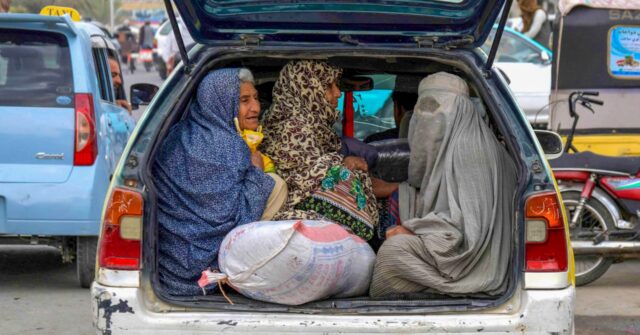In recent reports, senior figures in the Taliban have imposed new restrictions on Afghan women, emphasizing a significant regression in their rights and freedoms. A recent announcement from Mohammad Khalid Hanafi, the Taliban’s Vice and Virtue Minister, stated that women are banned from reciting the Quran or performing Islamic prayers aloud within earshot of others. This marks just one aspect of a broader set of “morality” reforms aimed at enforcing strict interpretations of Islamic sharia law. The measures aim to eradicate women from public life entirely, alongside demands to lower their voices so that they remain inaudible to men and other women. Such sweeping restrictions reflect the Taliban’s return to an oppressive regime reminiscent of their rule in the 1990s, where women’s roles were severely limited and their rights systematically stripped away.
The tightening grip of the Taliban over Afghan society comes on the heels of the group reclaiming power in August 2021, which coincided with the withdrawal of American troops from Afghanistan following a 20-year military presence. The Taliban’s reclamation of control was met with initial promises of an inclusive government that respected human rights. However, these promises quickly fell by the wayside as the jihadists set about implementing harsh regulations that disproportionately affect women. Under the guise of “morality,” they imposed these fundamental restrictions on civil liberties, laying the groundwork for a societal framework where women are silenced and rendered invisible.
Hanafi’s recent declarations highlight the extent of these restrictions. He explicitly stated that women should not use their voices to recite Quranic verses—the implications of which essentially criminalize women’s attempts to engage in communal worship. By claiming that any audible expression from women could lead to temptation and disrupt societal ethics, the Taliban is seeking to curtail interpersonal interaction among women altogether. This not only regulates women’s religious expressions but also serves as another tool of repression aimed at controlling how women navigate public and private spaces, effectively institutionalizing their subjugation.
Earlier this year, when announcing this revised set of restrictions, Hanafi mentioned that the decree, which comprises four chapters and thirty-five articles, outlines numerous personal conduct guidelines, including grooming and public behavior. The regulations dictate that women’s bodies must be entirely covered, and their voices must remain subdued to maintain modesty, while simultaneously restricting mens’ expressions through hairstyle regulations and prohibiting mixed-gender gatherings. This draconian framework illustrates a relentless pursuit of control over Afghan citizens, justified by the Taliban as necessary protections rooted in their interpretation of Islamic doctrine.
The Taliban’s return to power has also sparked a broader crackdown on independent journalism and free speech, as evidenced by reports restricting photojournalists from capturing images of living beings. Such actions demonstrate an alarming tendency toward censorship and highlight the hypocrisy in the Taliban’s communication strategies. Despite the prohibitions they impose on others, Taliban officials continue to engage with the media, showcasing their actions while denying the same opportunities to local journalists. This intensifying climate of fear suppresses dissent and undermines the essential freedoms of the press, further solidifying the Taliban’s power and narrative.
As the Taliban enforces these measures, they walk a fine line between projecting their ideals and maintaining control over the populous. The ramifications of these laws will undoubtedly lead to widespread suffering and continue to entrench gender inequality in Afghanistan. The group has made it clear that there will be no negotiation over their interpretation of Islamic principles, reinforcing their absolutist stance against any form of pushback. The situation remains dire for the Afghan people, particularly women, who now face a grim reality under this governance, as decades of progress in women’s rights continue to be systematically dismantled in the name of a narrow and regressive moral framework.

